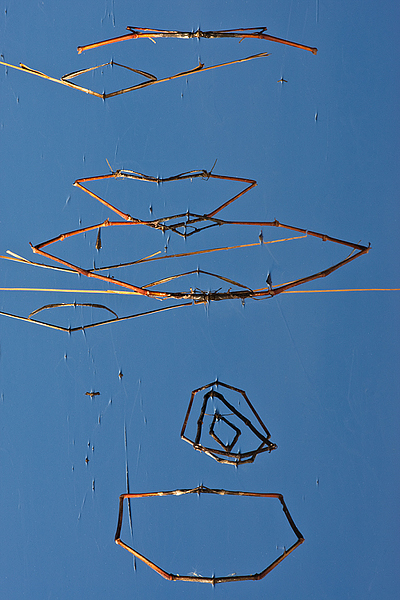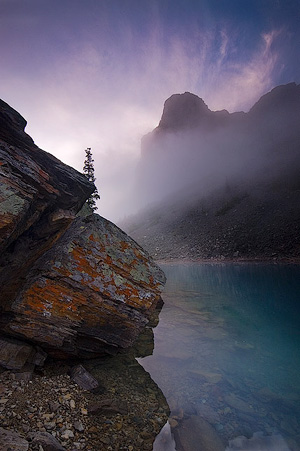Jay Goodrich emailed me with a wonderful idea. He suggested we both write an essay on Where does Your Creativity Come From? Below is Jay’s Essay. My essay appears on Jay’s Blog
Where Does Your Creativity Come From?
by Jay Goodrich
Well you see when a mommy and daddy are very much in love…Oh wait, that is where I came from, not where creativity comes from.
It comes from Don Julio 1942 Tequila. Kidding, well sometimes it does.
Down deep inside of me there is a flutter and when that flutter is there, creativity is….
Actually, I have been thinking about this self-imposed article idea for about a week now, ever since Darwin and I agreed to trade blog posts written about the same subject. Our topic suggestion as written in my email to him was “Where Our Creativity Comes From”. The problem I am having is, well, how to be creative with this article. I don’t know why. I have been on this creative rampage for years now, with very few lulls in the action. I have come up with so many ideas that I have had to create a document that contains them all. That document is up to 20 pages in length, single-spaced, with 8 point font now. So why can’t this guy, who jots down at least one idea every day, come up with the answer to his own question?

©Jay Goodrich
I sit here slamming the keys of my keyboard only to put something on an imaginary piece of paper on a monitor that displays something that only exists as coded zeros or ones in a place called cyberspace. Here are my pretty pictures, I hope you like them. See you next time. Well maybe I just need to think about this…

©Jay Goodrich
What have I done in the past when my photos have been horrible and nothing has seemed to come together? Why have I not had problems lately? Ah, therein lies the answer. Jackpot, Lotto, complete winner!
I was a bonafide city slicker growing up only 35 miles west of New York City. My only take on nature was venturing out into the “woods” in our backyard, which was bordered by blacktop on almost every side. I picked up my first camera as an adult about 17 years ago. I was fresh out of college, just moved to Colorado to escape the city and discover salsa that was real. I was shocked by the unbelievable, unspoiled beauty of my surroundings. I was visiting all of these really cool places and I decided that it would be a great idea to buy a camera to document everywhere that I had been. One camera, one lens, and a wobbly tripod that my dad leant me. The photos didn’t suck, some of them are in my portfolio to this day. Looking back, I often wonder how I achieved what I did with very little knowledge of photography and sub-standard gear. The answer was simple; my creativity was being driven by my inspiration of my surroundings, so it was really easy to put my knowledge of design (my degree was in architecture) into my compositions. That inspiration fueled that flutter deep down inside of me and I took to photography like steel to a magnet. It was so cool to chase the light. I am not saying that all of my images were great, by in large they were trash, but I had the inspiration to continue to persevere.

©Jay Goodrich
Then about ten years into my passion, something happened. For lack of a better description, I hit my “blue period”. I think it was because I hated my job at the time – working for an architecture firm that focused not on design like architecture should, but on making money from cookie cutter drawings. There wasn’t an ounce of creativity in the job that payed the bills. I had been published a bunch of times, so I thought I was “The Man”, and I was basically bored and broke most of the time. I still shot, but knew enough to throw away what didn’t work, which was basically everything. I was making money with photography, but not a lot, and I was pretty much lost. This lasted for about two years. That is long time to suck as a photographer – career ending.

©Jay Goodrich
Then I was given a the break of a lifetime; my employer had to lay me off. At first, I was pretty broken-hearted (only because I was about to become really poor), but all of that emotion made me do something that I never thought possible – I jumped from the ship and started to swim on my own. Don’t get me wrong, I swallowed a ton of water in the process, and still do. But it’s less and less, and I have learned to breathe a bit more while under water. Most importantly, my life is mine.

©Jay Goodrich
About that same time digital was starting to take off and I purchased a brand new Canon 5D. The day that I received it was the day that life started all over again. I took this photo on the Eagle River right across the street from my house, and something just clicked. This sent everything regarding my photography career into super-manic, never look back, keep working, work hard, push, push, push, forget about breathing mode. Now I was fueled, recharged and ready, but how did I keep that energy from fizzling out? Well, I relied on something I never thought possible – my education as an architect. I knew design, I loved design, I just needed to figure out how it could work together with photography.

©Jay Goodrich
I started reading about everything that inspired me-painters, graphic designers, architects, other photographers, architecture itself, builders, construction, music, movies, even tv shows like Discovery’s Biker Build-off where two designers would create custom choppers with the winner taking home only bragging rights and a cool trophy. All of these disciplines worked into my creative mindset, overflowed my inspiration tank, and had me shooting images like never before. I haven’t taken less than 20,000 images a year for the past five years. I have amassed a portfolio that I could truly be proud of.

©Jay Goodrich
So I have answered my own dilemma – my creativity comes from anything that inspires me. Anything and everything that brings me excitement. In the past year I have become friends with many of my favorite photographers, I have traveled with them, taught with them, eaten and drank with them, and discussed with them. Those friendships have lead to images and ideas even more powerful than I have ever imagined.

©Jay Goodrich
Thom Mayne, the founder of the architecture firm Morphosis, writes in his introduction to their Buildings and Projects 1989-1992 book, “I suppose…that our method somewhat resembles that of Canetti’s Doglike Writer: obsessed with sticking his damp nose into everything, he insatiably turns over the earth only to dig it up once more.” I think that the harder you work your mind, the more you push yourself, the more creative you become. Don’t let yourself turn over the earth just once with your photography – turn over the earth many times trying everything, and just when you think you have had enough, turn it over again. Eventually, creativity will hit you like it has hit me, and hopefully, when it does it will never stop. And if it does manage to slip from your grasp, pour yourself a two-finger glass of Don Julio 1942 tequila, sit down on your favorite chair or couch and proceed to allow creativity to catch up to you once again.

©Jay Goodrich





































